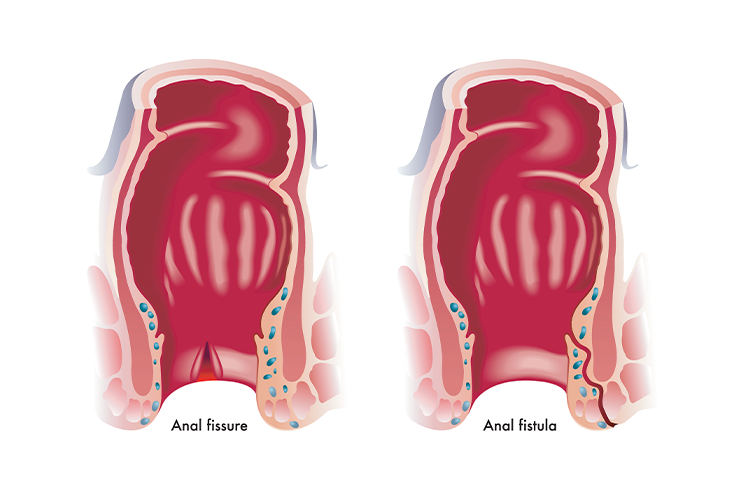
Fistula-in-Ano (Simple / Complex / Recurrent): A Comprehensive Overview
Fistula-in-Ano is a chronic abnormal connection between the anal canal and the skin near the anus, usually resulting from a previously untreated or inadequately healed anal abscess. It appears as a small opening near the anal region through which pus or discharge may continuously drain. This condition is typically caused by infection of the anal glands, leading to abscess formation and subsequent tunnel development. Fistulas are categorized as simple, complex, or recurrent, depending on their structure, depth, and relationship to the sphincter muscles. Simple fistulas usually involve a single straight tract that does not affect much of the sphincter, whereas complex fistulas may branch, involve significant portions of the sphincter, or occur in patients with conditions like Crohn’s disease or tuberculosis. Recurrent fistulas are those that return after prior treatment, often due to incomplete healing or underlying health issues.
Symptoms of fistula-in-ano include persistent pain, swelling, skin irritation, discharge of pus or blood, and in some cases, fever if an abscess forms again. Diagnosis is based on clinical examination and may be supported by imaging studies such as MRI, endorectal ultrasound, or fistulography to determine the tract’s complexity and involvement with sphincter muscles. Treatment varies according to the type of fistula. Simple fistulas can often be effectively treated with a fistulotomy, where the tract is opened and allowed to heal from the base outward. For complex or high-level fistulas, advanced procedures like Seton placement, LIFT (ligation of intersphincteric fistula tract), anal advancement flaps, or fibrin glue therapy may be required to preserve continence while ensuring complete healing. Recurrent fistulas require thorough assessment to rule out underlying causes and may necessitate staged or combined interventions. With timely diagnosis and personalized treatment, even complex or recurrent fistulas can be managed successfully, restoring comfort and preventing further complications.
